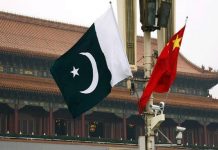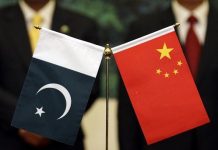An exhibition on the Nanjing Massacre, themed “Truths of the Past, Voices of the Present,” opened at the China Millennium Monument in Beijing on September 8.
The exhibition features 161 precious historical photographs, many taken by Western media, international friends, and even Japanese troops themselves. Some of these photos revealing brutal crimes were once censored by Japanese authorities, stamped “Not Permitted.” More than 50 books and journals on the Nanjing Massacre are also on display, offering evidence of the heinous crimes committed by the Japanese invaders in Nanjing between December 13, 1937 and January 1938.

Xin Feng, President of the China International Communications Group Center for the Americas, delivers remarks at the opening ceremony of the Nanjing Massacre Historical Exhibition in Beijing on September 8 (ZHANG WEI)
This year is the 80th anniversary of the victory in the Chinese People’s War of Resistance Against Japanese Aggression and the World Anti-Fascist War. The China theater was the main Eastern battlefield of World War II (WWII), and made an crucial contribution to the final victory in the global war.
Among the darkest chapters of that struggle, the Nanjing Massacre remains a memory that must never fade. On December 13, 1937, Japanese troops captured Nanjing, where they killed over 300,000 Chinese civilians and unarmed soldiers over the following six weeks. This atrocity stands as a national catastrophe for the Chinese people and a great calamity for humanity.
“Yet regrettably, to this day, the international community still lacks a full and correct understanding of the history of WWII. There is insufficient recognition of the important contribution made by the Chinese People’s War of Resistance Against Japanese Aggression to the ultimate victory in the World Anti-Fascist War,” said Xin Feng, President of the China International Communications Group (CICG) Center for the Americas, at the opening ceremony.
According to Xin, to promote greater international understanding, since August 15, CICG Center for the Americas, in cooperation with the Publicity Department of Nanjing Municipal Committee of the Communist Party of China, the Memorial Hall of the Victims in the Nanjing Massacre by Japanese Invaders, and other partners, has launched a series of themed activities under the theme “Truths of the Past, Voices of the Present.” The current exhibition, a major part of this series, aims to mourn the innocent lives taken by the Japanese invaders, inspire today’s people to cherish peace, and strengthen the resolve to safeguard it. “Only by facing historical truth with courage can we build the will and courage to defend peace,” Xin said.

Yu Jing, Vice General Manager of Gehua Media Group Co. Ltd., delivers remarks at the opening ceremony of the Nanjing Massacre exhibition on September 8 (ZHANG WEI)
Yu Jing, Vice General Manager of Gehua Media Group Co. Ltd., said reflecting on the past is a necessary part of appreciating and maintaining peace, “At this significant moment—the 80th anniversary of the victory of the Chinese People’s War of Resistance Against Japanese Aggression and the World Anti-Fascist War—we must draw lessons from history, cherish the present, and inspire the future,” she said.
Cao Lin, head of the exhibition and display department of the Memorial Hall of the Victims in the Nanjing Massacre by Japanese Invaders, told Beijing Review that the “international dimension” is the highlight of the exhibition. It places the Nanjing Massacre within the global context of WWII, presented alongside other wartime atrocities such as Auschwitz concentration camp.
Einar Tangen, a senior researcher with the Taihe Institute, echoed this view. “What you do is you show pictures of Auschwitz, you show pictures in Nanjing, you show pictures of Gaza, and you show them all at the same time, so that people understand it is the same thing. And this makes Nanjing an example of what has happened in the past, a warning that this should not happen today or in the future.”








